#Balaenopteridae
Explore tagged Tumblr posts
Text

North Atlantic humpback whale Megaptera novaeangliae novaeangliae
Observed by lma82, CC BY-NC
#Megaptera novaeangliae novaeangliae#North Atlantic humpback whale#Cetacea#Balaenopteridae#cetacean#whale#North America#United States#Massachusetts#Atlantic Ocean#Gulf of Maine#Massachusetts Bay
22 notes
·
View notes
Text

A humpback whale (Megaptera novaeangliae) breaches in Monterey Bay, California
by Robin Gwen Agarwal
#humpback whale#whales#cetaceans#marine mammals#megaptera novaengilae#megaptera#Balaenopteridae#cetacea#artiodactyla#mammalia#chordata#wildlife: california#wildlife: usa#wildlife: north america
266 notes
·
View notes
Text



The Very Nice Rice's Whale
Rice's whale, also known as the Gulf of Mexico whale (Balaenoptera ricei) is a species of whale found only in the Gulf of Mexico. Originally the species was thought to be restricted to the northeastern part of the gulf, but it is now known to travel throughout the area. They keep close to the coast, and are rarely seen in waters deeper than 400 m (1300 ft). Originally, Rice's whale was considered a subspecies of Bryde's whale (B. edeni), but in 2021 genetic testing revealed it to be a completely separate species.
Gulf of Mexico whales are moderately sized; females grow to 12.65 meters (41.5 ft) in length and 13.87 metric tons (15.28 US tons), while males are slightly smaller at 11.26 meters (36.9 ft) long. Adults are plain grey and three long ridges on the top of their heads, which makes up a full quarter of their body length. The throat pouches and the underside of the tail are pink.
B. ricei follows a diel vertical diving pattern; they spend the day foraging near the bottom of the ocean, and rise to the surface at night. Though little is known about the diet of Rice's whales, it is suspected that they feed on lanternfish, hatchetfish, and silver-rag driftfish, which are abundant at great depths. Because they are baleen whales, they likely ingest large quantities of water and then filter their catch through their baleen plates.
The breeding habits of Gulf of Mexico have not been studied, but scientists extrapolating from information on the closely related Bryde's whale believe that B. ricei reproduce once every two or three years. Pregnancies may last 10-12 months, and subsequent nursing may last for up to 2 years. Scientists also estimate that Rice's whale reaches sexual maturity at 9 years old, and can breed year-round due to the warm, food-rich waters in which they live. Adults are often seen in small groups of 2-4.
Conservation status: The Gulf of Mexico whale is considered Critically Endangered by the IUCN. Less than 100 individuals exist in the wild; most scientists estimate the population to be no greater than 33. Their primary threats are boat strikes and the hazards included in drilling for oil, including underwater noise and oil spills.
Photos
National Marine Fisheries Service
NOAA Fishieries
#rice's whale#gulf of mexico whale#Artiodactyla#Balaenopteridae#baleen whales#rorquals#whales#cetaceans#even toed ungulates#ungulates#mammals#marine fauna#marine mammals#open ocean#open ocean mammals#pelagic fauna#pelagic mammals#atlantic ocean#gulf of mexico#animal facts#biology#zoology#ecology
111 notes
·
View notes
Text


Humpback Whale (Megaptera novaeangliae) - (c) SaritaWolf - please do not repost
0 notes
Text





#poll#Class: Mammalia#Order: Artiodactyla#Family: Balaenopteridae#Genus: Megaptera#Megaptera Novaeangliae
113 notes
·
View notes
Text
Round 3 - Mammalia - Artiodactyla




(Sources - 1, 2, 3, 4)
Our final order of mammals, and second order of ungulates is Artiodactyla, commonly referred to as “even-toed ungulates”. Artiodactyla is a large and highly diverse group which includes the living families Camelidae (“camels”, “vicuñas”, “guanacos”, and kin), Suidae (“pigs”), Tayassuidae (“peccaries”), Hippopotamidae (“hippopotamuses”), Balaenidae (“right whales” and “Bowhead Whale”), Cetotheriidae (“Pygmy Right Whale”), Balaenopteridae (“rorquals”), Eschrichtiidae (“Gray Whale”), Delphinidae (“oceanic dolphins”), Monodontidae (“Beluga Whale” and “Narwhal”), Phocoenidae (“porpoises”), Kogiidae (“Pygmy and Dwarf Sperm Whales”), Physeteridae (“Sperm Whale”), Iniidae (“South American river dolphins”), Platanistidae (“south Asian river dolphins”), Pontoporiidae (“La Plata Dolphin”), Ziphiidae (“beaked whales”), Tragulidae (“chevrotains”), Antilocapridae (“Pronghorn”), Giraffidae (“giraffes” and “Okapi”), Cervidae (“deer”), Moschidae (“musk deer”), and Bovidae (“cattle”, “antelopes”, “goats”, and kin).
Artiodactyls are typically defined by the fact that they bear most of their weight equally on two or four of the five original ungulate toes. However, all living members of the infraorder Cetacea have lost their toes, replacing them with flipper-like limbs. Many artiodactyls have a relatively large head, with an elongated and narrow skull. Some families have cranial appendages, which include true horns, antlers, ossicones, or pronghorns. True horns have a bone core that is covered in a permanent sheath of keratin, and are found only in the Bovids. Antlers are bony structures that are shed and replaced each year, only found in deer. Artiodactyls have a well-developed sense of smell and sense of hearing. Similar to many other prey animals, their eyes are on the sides of the head, giving them an almost panoramic view, so that they can keep an eye out for predators while grazing. This order is highly diverse, ranging in size from the rabbit-sized Java Mouse-deer (Tragulus javanicus) to the largest mammal, and possibly the largest animal to ever exist: the Blue Whale (Balaenoptera musculus). Most are herbivorous, but many are omnivores or even carnivores.
Male artiodactyls are usually larger than females. In the majority of deer species, only the males grow antlers, and the horns of female bovines are usually smaller or absent. As this is a very diverse group, social and mating behavior vary between species. They have a tendency to form larger groups, but some live alone or in pairs. Species living in groups often have a hierarchy, both among males and females. Some species also live in harem groups, with one male, several females, and their common offspring. In other species, the females and juveniles stay together, while males are solitary or live in bachelor groups and seek out females only during mating season. Generally, artiodactyls tend to have long gestation periods, smaller litter sizes, and more highly-developed young (usually called a “calf”). Most deliver 1 or 2 calves at a time, but some pigs can deliver up to ten. Newborn artiodactyls are precocial and are born with hair and open eyes.
The oldest fossils of artiodactyls date back to the early Eocene (about 53 million years ago).

Propaganda under the cut:
More than half the species in the family Camelidae are domesticated, with the only living wild camelids being the Vicuña (Lama vicugna) (ancestor of the domestic Alpaca), the Guanaco (Lama guanicoe) (ancestor of the domestic Llama), and the Wild Bactrian Camel (Camelus ferus) (NOT the ancestor of the Domestic Bactrian).
Camelids have true canine teeth and tusk-like premolars, which are separated from the molars by a gap.
Both the Bactrian Camel (Camelus bactrianus) (image 1) and the Dromedary (Camelus dromedarius) were domesticated in ancient times for riding, transport, ploughing, and as a source of milk, meat, wool, and leather. Today, the wild ancestors of both of these species are extinct, and only feral populations of domestic camels remain. The only truly wild camel species left is the Wild Bactrian Camel (Camelus ferus), which is critically endangered.
The Wild Bactrian Camel can survive on water saltier than seawater, something which no other mammal in the world seems to be able to tolerate, including the domestic Bactrian Camel.
In Aymara mythology, Llamas (Lama glama) are sacred beings. The Heavenly Llama is said to drink water from the ocean and urinates as it rains. According to Aymara eschatology, llamas will return to the water springs and ponds where they come from at the end of time.
Babirusas (genus Babyrousa) are unique for their prominent, upwards incurving, canine tusks, which pierce out through the flesh of the snout in males. The upper canine tusks continue growing, curving backward over the front of the face and towards the forehead. If a male Babirusa does not grind his tusks (achievable through regular activity), they can eventually keep growing and, rarely, even penetrate the individual's skull.
The Domestic Pig (Sus domesticus) was domesticated from the Wild Boar (Sus scrofa) beginning in the Neolithic, and is a result of two different domestication events in both the Middle East and China. They are mostly kept for meat and leather, but are also used in medicine and as pets. The Domestic Pig is one of the few omnivorous animals to be domesticated.
The endangered Chacoan Peccary (Catagonus wagneri) is the rarest of the 3 living species of peccary, with only around 3,000 individuals left in the world. It is a “Lazarus taxon”, as its genus was first described from fossil remains of the extinct Catagonus metropolitanus. The Chacoan Peccary only lives in hot, dry, thorny areas of the Gran Chaco.
While the semi-aquatic hippopotamuses were once more diverse, only two species of different branching lineages remain: the vulnerable Common Hippopotamus (Hippopotamus amphibius) (see gif above) and the endangered Pygmy Hippopotamus (Choeropsis liberiensis).
The Egyptian goddess Tawaret is depicted as a pregnant woman with a hippopotamus head, representing fierce maternal love.
Humans have hunted whales since prehistoric times, with depictions of whaling dating back to 6000 BC. Whales are hunted for their meat, blubber, and oil. Whale oil was in high demand for lighting lamps in the 18th century. The Sperm Whale (Physeter macrocephalus) was particularly prized for spermaceti, a dense waxy substance that burns with an exceedingly bright flame that is found in the whale’s spermaceti organ. Approximately 40% of Right Whales' (genus Eubalaena) (image 3) body mass is blubber, and thus they were known as the "right" whale to kill. Today, the North Atlantic Right Whale (Eubalaena glacialis) is the most critically endangered great whale, with around 372 individuals left in the world. While whale hunting has been significantly curtailed in recent years, whales still face threats from entanglement in fishing gear, boat strikes, underwater noise pollution, plastic and heavy metals build-up, and accelerating climate change. Cetaceans are still hunted in some countries.
The Humpback Whale (Megaptera novaeangliae) is known to not only fight back against their main predators, Orcas (Orcinus orca), but also to interfere with Orca hunting parties, rescuing their prey.
The mysterious Narwhal (Monodon monoceros) is known for the long tusk of the males, which is a protruding left canine thought to function as a weapon, a tool for feeding, in attracting mates, or for sensing water salinity. Some males may grow two tusks, occurring when the right canine also protrudes through the lip. Some females may grow a tusk as well, but it is usually smaller than the tusks of males.
The critically endangered Vaquita (Phocoena sinus) is the smallest of all living cetaceans, reaching a maximum body length of 150 cm (4.9 ft) for females or 140 cm (4.6 ft) for males. The Vaquita is one of the most endangered animals in the world, with around 6-11 individuals remaining. They are endangered primarily due to bycatch in gillnets from the illegal Totoaba (Totoaba macdonaldi) fishery.
The Baiji (Lipotes vexillifer) was a river dolphin, and the last surviving member of the family Lipotidae. It is classified as "critically endangered: possibly extinct", as no specimens have been seen in the Yangtze River in over 20 years. Heavy use of the river for fishing, transportation, and hydroelectricity were the likely causes of this unique species’ extinction. While some individuals may survive, their population is likely too low to recover. If indeed extinct, the Baiji's disappearance would be the first recorded extinction of a well-studied cetacean species to be directly attributable to human influence.
The Pronghorn (Antilocapra americana) is the last surviving member of its family. While they are sometimes referred to as antelope, this is an example of convergent evolution, and their closest living relatives are the Giraffids. The Pronghorn is the fastest land mammal in the Americas, and the third fastest land mammal on Earth, with running speeds of up to 88.5 km/h (55 mph). This running speed was likely an adaptation to flee the Pleistocene American Cheetahs (genus Miracinonyx), which are now extinct.
Giraffes are the tallest living land animals, with the largest being the Masai Giraffe (Giraffa tippelskirchi). Bull Masai Giraffes can grow up to 5.5 meters (18 feet) in height, and weigh 1,300 kilograms (2,900 pounds).
Caribou (Rangifer tarandus), also known as Reindeer, are unique among Cervids in that females may have antlers, although the prevalence of antlered females varies by subspecies.
Cervid antlers are a controlled form of bone cancer. Antler growth is tightly regulated by the activity of tumor-suppressing and tumor-growth-inhibiting genes. The cancer-suppressing genes that keep growth in check also protect against cancer in general, and documented cancer rates in deer that are five times lower than rates in other mammals.
Musk Deer (genus Moschus) are not true deer belonging to the family Cervidae, but rather their family is most closely related to Bovidae. They are known for the enlarged upper canines, forming sabre-like tusks, grown by the males for display.
The family Bovidae is the largest of the artiodactyls, and ungulates in general, accounting for nearly 55% of the ungulates. They also contain the majority of domesticated animals.
The critically endangered Saola (Pseudoryx nghetinhensis) is also known as the “Asian Unicorn” due to its rarity. The first photograph of a living Saola was taken in captivity in 1993. The most recent one was taken in 2013 by a movement-triggered camera in the forest of central Vietnam.
The African Buffalo (Syncerus caffer), specifically the Syncerus caffer caffer subspecies, the Cape Buffalo, is known as one of the most dangerous animals in Africa. With nicknames like "the Black Death" or "the widowmaker", Cape Buffalos can be highly territorial and defensive, and wounded animals are reported to ambush and attack hunters. (However, Elephants, Nile Crocodiles, and Hippos are still responsible for more deaths per year than African Buffalos are. Not to mention mosquitoes and venomous snakes.)
Domestic Cattle (Bos taurus) and Zebu (Bos indicus) were both domesticated from the now extinct Aurochs (Bos primigenius) during the Neolithic revolution. While the Aurochs is now extinct, Domestic Cattle are the most successful members of their lineage, with over 1.4 billion cattle in the world.
The Springbok (Antidorcas marsupialis) is the fourth fastest land mammal, clocked at 88 km/h (55 mph). They are primarily known for their pronking behavior: bouts of repeated high leaps of up to 2m (6.7 ft) into the air. In pronking, the Springbok performs multiple leaps into the air in a stiff-legged posture, with the back bowed and the white fur on its rump raised. This behavior displays the fitness of males, both to attract mates and to ward off predators, who won’t waste time chasing a healthy, fit Springbok.
The Domestic Sheep (Ovis aries), domesticated from the Mouflon (Ovis gmelini) between 11,000 and 9000 BC in Mesopotamia, and the Domestic Goat (Capra hircus), domesticated from the Bezoar Ibex (Capra aegagrus aegagrus) around 8000 BC, were domesticated to provide easy access to meat, hides, dung (used for fuel), wool, and milk. It is thought that the birth of agriculture and domestication of livestock is what led to human civilizations, as it was hard to be nomadic with a large herd of animals. Villages popped up around pens of livestock, leading to towns, leading to cities.
#animal polls#round 3#mammalia#aaaah sorry this is late I had to sleep before I could finish it again ;_;
153 notes
·
View notes
Text
One of my favorite animals ever.


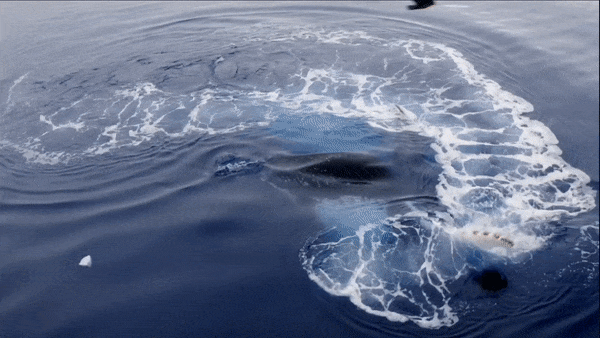

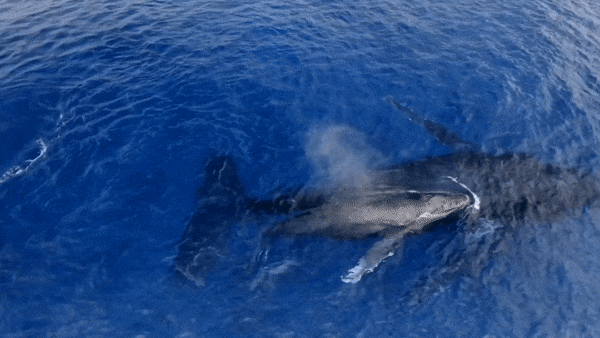


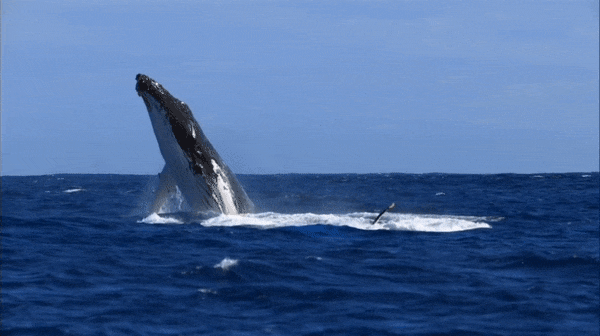
Secrets of the Whales (2021) Episode 2: Humpback Songs
#humpback whales#baleen whales#cetaceans#whales#megaptera novaeangliae#balaenopteridae#mysticeti#🐋#today was a whale day what can i say!
35 notes
·
View notes
Text
Word List: Animals

for your next poem/story (pt. 2)
Accentor - a small Eurasian songbird with generally drab-colored plumage
Brach - a female hound
Culver - a dove or pigeon
Diprotodon - a monotypic genus of Australian Pleistocene herbivorous marsupials related to the kangaroos, resembling a rhinoceros in size, and walking on four legs
Eyas - an unfledged bird, specifically: a nestling hawk
Falanouc - (or Falanaka) a viverrine mammal, Eupleres goudotii, of Madagascar closely related to the Asiatic palm civet
Gerenuk - a large-eyed antelope (Litocranius walleri) of eastern Africa with a long neck and limbs
Huemul - (or Guemal) either of two small South American deer, Hippocamelus bisulcus and H. antisiensis, having simple forked antlers
'I'iwi - Hawaiian honeycreeper (Vestiaria coccinea) with chiefly bright vermilion plumage formerly used in making feather cloaks
Jerboa - any of several social nocturnal jumping rodents (family Dipodidae) of arid parts of Asia and northern Africa having a long tail and long hind legs
Kinkajou - a nocturnal arboreal omnivorous mammal (Potos flavus) found from Mexico to South America that is related to the raccoon and has a long prehensile tail, large eyes, and yellowish brown fur
Leveret - a hare in its first year
Murre - any of a genus (Uria) of black-and-white alcids, especially: a common seabird (U. aalge) of northern seas
Nyala - an antelope (Tragelaphus angasii) of southeastern Africa with vertical white stripes on the sides of the body, a dorsal crest of hair from the neck to the base of the tail, and in the male shaggy black hair along the underside; also: a related antelope (T. buxtoni) of Ethiopia
Olm - an elongated European cave-dwelling aquatic salamander (Proteus anguinus) with permanent external gills and small eyes covered by the skin
Pudu - a small reddish deer (Pudu pudu) of the Chilean Andes having simple antlers resembling spikes and standing only 12 or 13 inches high
Quarrion - cockatiel (i.e., a crested small gray Australian parrot, Nymphicus hollandicus, with a yellow head)
Rorqual - any of a family (Balaenopteridae) of large baleen whales that have relatively small heads, short, broad plates of baleen, and the skin of the throat marked with deep longitudinal furrows and that include the blue whale, humpback whale, minke whale, fin whale, and sei whale
Spatangid - a sea urchin of the suborder Spatangina; heart urchin
Turaco - any of a family (Musophagidae) of typically crested African birds that are related to the cuckoos and have a long tail, a short stout often colored bill, and red wing feathers
Urubu - black vulture (i.e., an American vulture, Coragyps atratus, that is smaller than the turkey buzzard and heavier in flight)
Vicuña - a long-necked mammal (Lama vicugna synonym Vicugna vicugna) of the Andes from Peru to Argentina that is related to but somewhat smaller than the guanaco, has a light brown woolly coat that is paler below, is considered to the be ancestor of the alpaca, and has been historically hunted for its wool and meat
Widgeon - any of several freshwater ducks (genus Mareca)
Xiphosura - an order of arthropods comprising the horseshoe crabs and extinct related forms and usually including only the two recent genera Limulus (synonym Xiphosurus) with representatives along the American coast of the Atlantic and Tachypleus with species along the Asiatic coast of the Pacific
Zokor - a burrowing rodent (Myotalpa aspalax) native to the Altai mountains that resembles a mole rat
More: Word Lists ⚜ Part 1
#animals#word list#writing inspiration#writeblr#langblr#dark academia#writing reference#spilled ink#creative writing#linguistics#words#light academia#literature#writers on tumblr#poets on tumblr#writing prompt#poetry#rosa bonheur#writing resources#definitions from merriam-webster and oxford
78 notes
·
View notes
Note
what is the most frustrating thing in taxonomy in the worlds of this?
WHERE DO I START WITH THIS ONE.
Riakhou are fairly simple, taxonomically. Sure, they've had a lot of genetic modifications but since their homeworld was likely destroyed in the supernova explosion of their sun, we don't have enough material on them to actually... put together the phylogenetic tree of their homeworld and see exactly which parts of them bring them closer to which branches of said tree. If we had we could probably have some fun with that but oh well.
You know who is NOT simple though?
Gileñavu. Affectionately known as Turtle-Deer-Whales.
And the fact that their government will not let us see what they're hiding in the ocean! /j
Anyway. Gileñavu! They are genetically more similar to Cetaceans (who live on Eisheza, the PLANET NEXT DOOR) than to some species on their own homeworld. And this isn't even scratching the surface of it, oh no. According to some scientists there is a chance they could probably produce an infertile hybrid (like a mule) with some whales (Maybe Rorquals/Balaenopteridae). That’s how similar they are to whales. Not their shells though. Their shells are a symbiotic organism more similar to rest of l'Nouan life than Gileñavu are. Sort of like if a coral lost most of its life adaptations and relied on another species to sustain it. (NOT SO FUN FACT. While a gileñavu could survive without its shell with proper care (the shell is fused with its spine, so it would end up paralysed), the shell cannot survive without its host).
But gileñavu pre-sapient ancestors also had those shells, so that symbiosis has been going on for AT LEAST 950,000 years, maybe more. Scientists don't even know where to START with this one. Unfortunately, because l'Noua does not have dry land anymore, and also because gileñavu authorities can be very conservative and distrustful of alien scientists, archaeology there is extremely hard.
We do know that Gileñavu are descended from.... well, ungulates that lived on l'Noua back when it still had dry land, but as the planet flooded most species re-evolved aquatic adaptations. This is also where gileñavu antlers come from. Somehow the appeal of a rack on the head was strong enough to let this trait be passed on for millions of years, even if it's very impractical in water.

^ A prehistoric terrestrial Gileñavu ancestor, from way before the icebergs melted and the planet flooded.
Anyway. What IS the deal with gileñavu?!
Is it like carcinisation where just like all arthropods become crabs all big sea mammals become whales? Or like that bird that re-evolved from being extinct? Did something happen in planetary history that we might not know about that explains it? WHO KNOWS! NOT US!
The most common theory is that. An asteroid brought life (or life building blocks) to Eisheza and l'Noua. That it split in two and hit both and this is why life on those two planets is so similar. But a counter-argument to this is that life-building-block bearing asteroid would have come so long ago that even if these two planets developed life from the same building blocks! Unless the asteroid was also somehow carrying blueprints for life to develop which is yet another can of worms.
Every planet has its own weird little niches that are fascinating and that some may find baffling. Like some Wuvumian "trees" whose cells don't have a nucleus making them the largest known 'prokaryotes' we know of.
Or a certain anhydrous lifeform found by asteroid miners that can shift between an active slime-mold like form and a dormant crystalline form making them as resilient as tardigrades.
Or various forms of life found in the atmosphere of a gas giant in a star system nearby (so far only photographed).

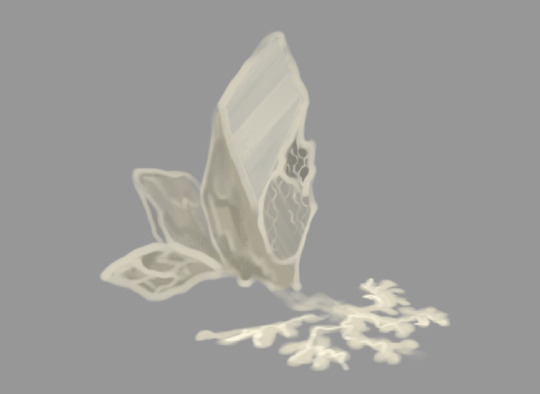
TL;DR:
Riakhou are not the worst offenders here. Gileñavu are. As for other life forms we probably have not gone deep enough to discover all the weirdness that will cause us to write long winded lamentations on our hatred of taxonomy and evolution.
10 notes
·
View notes
Text

Eden's whale "Balaenoptera" edeni
With menhaden Brevoortia sp.
Observed by haitongyu, CC BY-NC
#Balaenoptera edeni#Eden's whale#Cetacea#Balaenopteridae#cetacean#whale#non-ungulate#fish#menhaden#Brevoortia sp.#Asia#China#Guangxi#Pacific Ocean#South China Sea#Gulf of Tonkin
1K notes
·
View notes
Text

A humpback whale (Megaptera novaeangliae) in Norway
by Bo Eide
#humpback whale#whales#cetaceans#marine mammals#megaptera novaengilae#megaptera#Balaenopteridae#cetacea#artiodactyla#mammalia#chordata#wildlife: norway#wildlife: europe
246 notes
·
View notes
Text
Gamers, I Am No Longer A Catgirl
instead, last night i streamed and revealed my new model&design, which i made entirely by hand
so now, I'm cutie Whalegirl!!
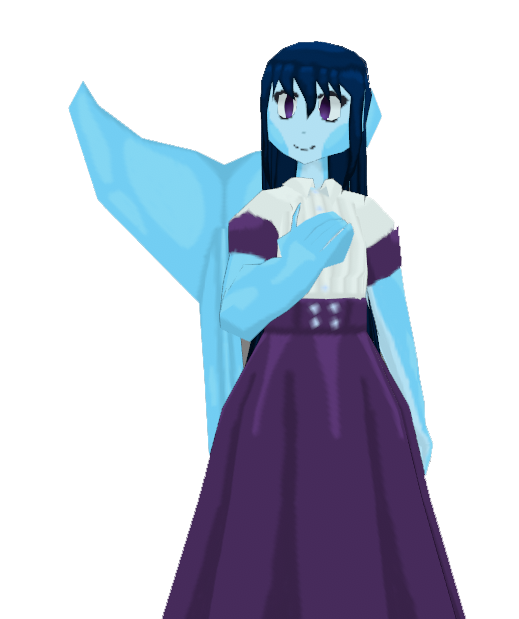
in following with this ive decided that i needed a last name for my streaming persona, for which ive decided to go with Balaen! its the first portion of the word of the cladistic family Balaenopteridae, which whales belong to. :)
ive been working through renaming and re-themeing all my accounts and things accordingly, so! this account is now called Ryuuka-Balaen, and my other links is now mostly the same being https://www.twitch.tv/ryuuka_balaen, https://www.youtube.com/@RyuukaBalaen, and https://twitter.com/ryuuka_balaen
finally, here's my new me in motion on stream! (though i was a little choppy due to subnautica eating all my pc's resources oopsies)
twitch_clip
also, while streaming my chat brought me to a sorta revelation that i now look really similar in style to @gauntletqueen, whose model ive admired for years
twitch
#/ᐠ。ꞈ。ᐟ\#catstreaming#i feel like there was smth else i wanted to say but i forgor#oopsies!#oh well
8 notes
·
View notes
Text

When you think of a whale, chances are this is the first one that comes to mind.
The Humpback Whale (Megaptera novaeangliae) is a member of the family Balaenopteridae, more commonly known as the Rorquals. These gorgeous animals can be found in oceans around the world. They feed in polar waters and migrate annually to breed and give birth in more tropical waters. Humpbacks can measure up to 56 feet long and can weigh up to 40 tons. Like other baleen whales, Humpbacks are filter feeders that typically feed on krill or small fish. Like many other whales, Humpbacks were targeted by the whaling industry, and were nearly hunted to extinction. Since the 1960s their numbers have multiplied significantly, however they are still threatened by ship strikes and entanglement with fishing gear.
#humpback whale#evolution#animal art#animals#baleen whale#whales#whale evolution#whale#cetacean#cetaceans#holocene#present day
2 notes
·
View notes
Text

Humpback Whale (Megaptera novaeangliae) - (c) SaritaWolf - please do not repost
0 notes
Text


#poll#Class: Mammalia#Order: Artiodactyla#Family: Balaenopteridae#Genus: Balaenoptera#Balaenoptera musculus
64 notes
·
View notes
Text
SANTIAGO - Une gigantesque baleine bleue, considérée comme le plus grand animal de la planète, s'est échouée sur une plage du sud du Chili, certainement après être morte en mer, ont annoncé dimanche les autorités locales. Les habitants de la ville d'Ancud, sur l'île de Chiloé, ont repéré pour la première fois le mammifère marin géant samedi sur une plage de l'océan Pacifique à quelque 1 000 kilomètres au sud de la capitale Santiago. Des agents de l'agence nationale de la pêche chilienne Sernapesca, envoyés pour enquêter, ont confirmé que la carcasse était celle d'"un grand cétacé de la famille des Balaenopteridae", ont-ils posté sur la plateforme X anciennement dénommée Twitter. "Nous avons aidé à identifier le spécimen et, sur la base de preuves préliminaires, il s'agit d'un rorqual bleu", a également ajouté l'agence. Le directeur régional de Sernapesca, Cristian Hudson, a affirmé aux médias locaux que "compte tenu de son état, la baleine a dû mourir en mer il y a quelque temps et a dérivé dans cet état". Les groupes environnementaux ont noté que les eaux de la région sont fortement utilisées par l'industrie de la pêche et le trafic maritime, et ils ont appelé à une enquête pour déterminer si la créature a été victime d'une collision. D'après le Centre non gouvernemental de conservation des cétacés (CCC) du Chili, la famille des Balaenopteridae, ou rorquals, comprend une variété d'espèces, allant du petit rorqual de neuf mètres à la baleine bleue - qui, jusqu'à 30 mètres, est présentée comme le plus grand animal sur Terre. AFP
0 notes